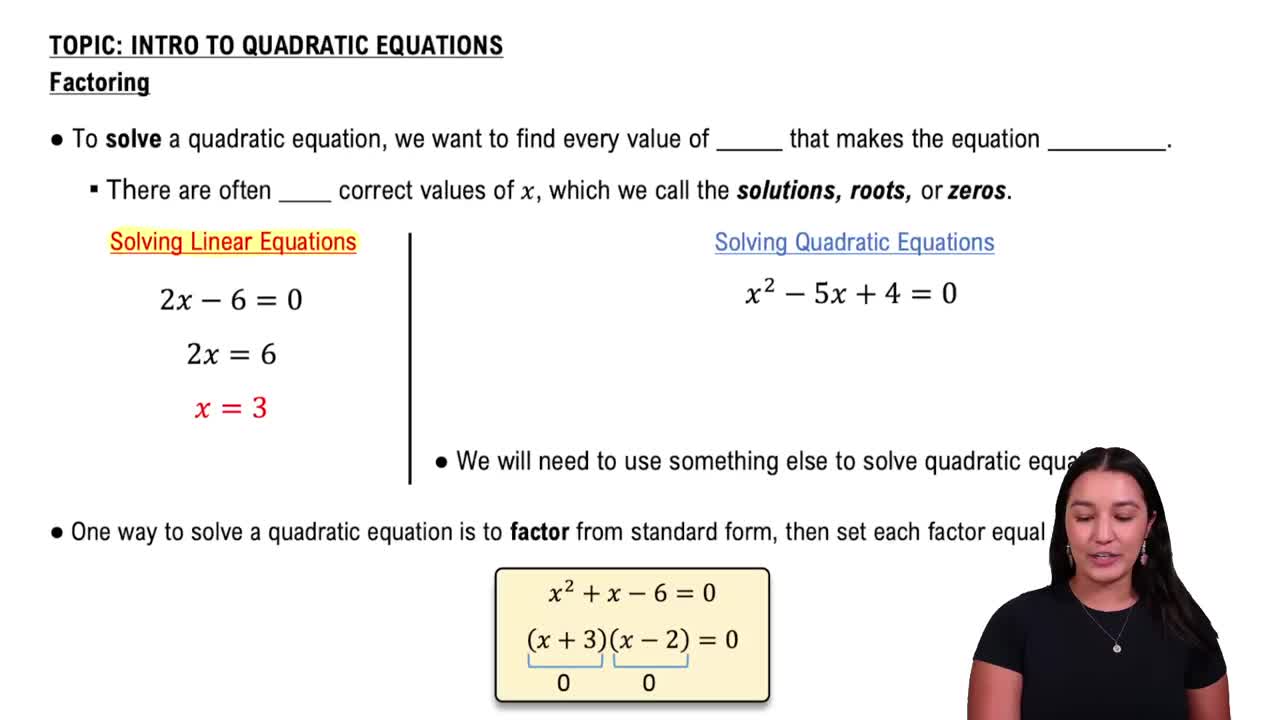Here are the essential concepts you must grasp in order to answer the question correctly.
Quadratic Inequalities
Quadratic inequalities are expressions that involve a quadratic polynomial set in relation to a value, typically using symbols like ≤, ≥, <, or >. To solve these inequalities, one must determine the values of the variable that make the inequality true, often by finding the roots of the corresponding quadratic equation and testing intervals between these roots.
Recommended video:
Interval Notation
Interval notation is a mathematical notation used to represent a range of values. It uses parentheses and brackets to indicate whether endpoints are included (closed intervals) or excluded (open intervals). For example, the interval [a, b] includes both a and b, while (a, b) does not include them. This notation is essential for expressing the solution set of inequalities succinctly.
Recommended video:
Factoring Quadratics
Factoring quadratics involves rewriting a quadratic expression as a product of its linear factors. This process is crucial for solving quadratic equations and inequalities, as it allows one to identify the roots or critical points where the expression equals zero. Understanding how to factor quadratics helps in determining the intervals to test for the inequality's validity.
Recommended video:
Solving Quadratic Equations by Factoring
 Verified step by step guidance
Verified step by step guidance Verified video answer for a similar problem:
Verified video answer for a similar problem:

